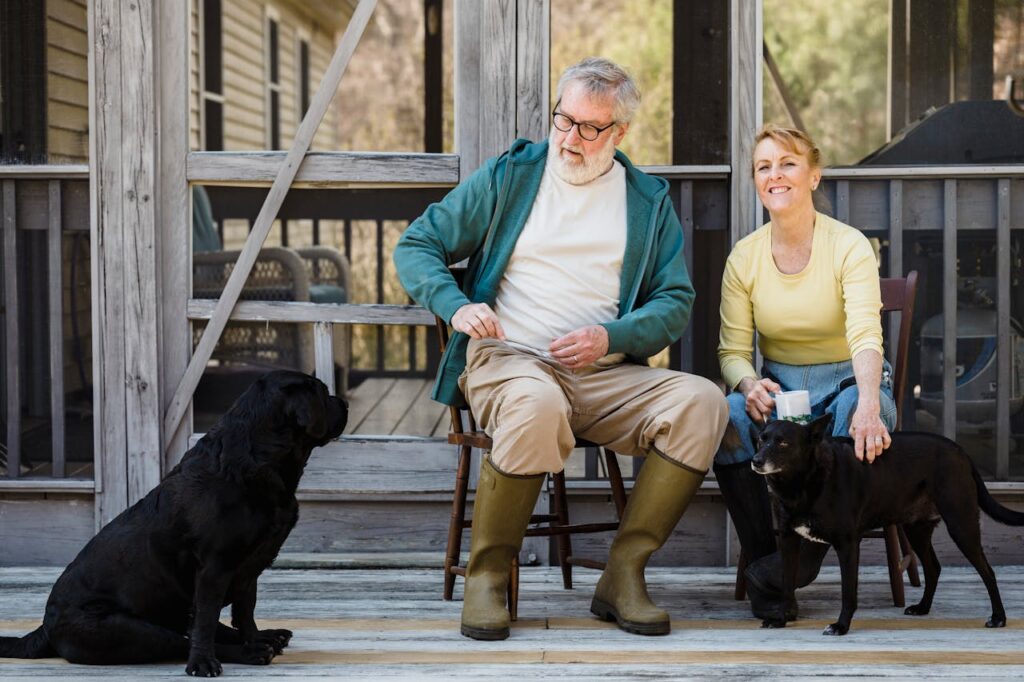Digital Fortresses: Seniors and the Art of Privacy Protection in Today’s World
Digital Fortresses: Seniors and the Art of Privacy Protection in Today’s World Navigating the digital terrain can already be daunting for anyone, but for seniors, it’s akin to finding your way through a labyrinth with shifting walls and hidden traps. The theological might say we live in a ‘fallen world’, with technology entry into the world – both God’s great gift and the manifestation of long-perceived risks. Seniors today witness a digital age that changes the meaning of privacy daily and, consequently, risks their personal information. However, fortress-like privacy protections exist to shield against these modern ails. In this exhaustive guide, seniors and their families will uncover the tactics and tools needed to safeguard digital sanctuaries — one byte at a time. Understanding the Risks Seniors encounter a digital landscape fraught with risks ranging from malicious scams targeting their financial assets to invasions of personal data. It’s poignant to recognize the very real threats that bear consequences from the loss of sensitive information. By understanding these perils, seniors can equip themselves with knowledge as their first line of defense. The Scourge of Scams Online scams are at an all-time high, orchestrators trolling the web for unsuspecting victims – often preying upon the elderly who may be less experienced in detecting deception. Common examples include fraudulent offers, fake charities, and thieving under the guise of technical support. Seniors must remain vigilant and informed, approaching all online offers with a measure of skepticism. The Webs of Phishing Phishing is a sophisticated form of cyber-attack where the perpetrators masquerade as trustworthy entities to gain access to sensitive data. For seniors, emails claiming to be from banking institutions or government agencies can be particularly dangerous. False sense of urgency or alarmist language often characterizes these messages, coaxing recipients into divulging information without second thought. The Shadow of Identity Theft Identity theft is perhaps the most insidious threat, with repercussions that can linger for years unnoticed. Seniors, often possessing esteemed credit histories, become prime targets. A stolen identity can lead to financial ruin, tarnished reputations, and a maze of bureaucratic challenges to reclaim one’s identity. Best Practices for Personal Information Protection In the age of robust cybercrimes, passive defense is no defense at all. Seniors are encouraged to fortify their digital identities by adopting security protocols and practices that establish a solid barrier against information breaches. Mastering Password Protocols The significance of a strong, unique password cannot be overstated. A good password, like a good lock, is a deterrent to would-be thieves. Seniors should employ randomness and complexity when crafting passwords, using a mixture of upper and lowercase letters, numbers, and special characters. The Sentinel of Two-Factor Authentication Two-factor authentication (2FA) acts as a second layer of security when logging into accounts. For seniors, this extra measure can be pivotal in preventing unauthorized access. With 2FA enabled, even if a password is compromised, the additional verification step provides another hurdle for potential intruders. Shields of Privacy Settings Understanding and utilizing privacy settings across devices and platforms is a straightforward yet potent method of enhancing online security. Seniors should take regular ‘privacy audits’, ensuring that their information is only as public as they intend it to be. Social media, in particular, is often overlooked as a potential source of exposed data. The Role of Caregivers and Family The responsibility of safeguarding personal information doesn’t solely rest on the shoulders of seniors. Family members and caregivers play a critical role as both facilitators and monitors in the pursuit of digital privacy. The Setup of Safe Technology Assisting seniors with setting up their devices ensures that they start their digital journeys with a secure foundation. This includes regular updates of operating systems and software to patch vulnerabilities that could be exploited. Monitoring, Not Hovering The approach to supervision must be one of balance. While it’s crucial to monitor seniors’ online activities for potential risks, it’s equally important to respect their independence. Empowering seniors with knowledge to make informed decisions about their digital conduct is fundamental. The Necessary Education For seniors, the digital learning curve can be steep. By providing clear, patient guidance, family members can help bridge the gap in understanding, opening the doors to a world of communication and resources while mitigating the associated risks. Recommended Tools and Resources The digital toolbox is brimming with solutions tailored to ease the burden of privacy protection for seniors. Password Managers Password managers are like keyrings for digital locks, storing and creating robust passwords, so seniors don’t have to keep them all in mind. Services like LastPass or Dashlane are user-friendly and secure, taking the hassle out of password management. Antivirus and Antimalware Quality antivirus and antimalware software are critical components in the arsenal of digital defense. There are several options geared towards user-friendliness and effectiveness, providing continuous protection without being overly intrusive. Privacy-Focused Browsers Specialized browsers prioritize user anonymity and security, features seniors might find particularly appealing. Tools like the Tor browser or Brave offer heightened privacy settings and ad-blocking capabilities. Case Studies Real-world scenarios underscore the importance of proactive privacy measures and the ways in which they translate to tangible safety and security for seniors. Empowering through Education The story of a senior who experienced a near-miss with an online scam but, armed with knowledge, was able to identify the ruse and prevent a financial loss. Through continued education, she has fortified her digital defenses and is now a proponent of sharing her experiences with peers. The Success of Shared Responsibility In another story, a caring family implemented comprehensive privacy measures for their elder member, emphasizing shared responsibility for maintaining protection. This case shows the positive impact of collaborative action in securing a senior’s online activities. Conclusion and Call to Action The digital world is a boon, providing boundless opportunities for connection and growth. Yet, with its gifts, it carries risks, especially for the elderly. The tales of triumph against digital adversaries paint a picture of hope and resilience. For seniors and their families, the charge is


